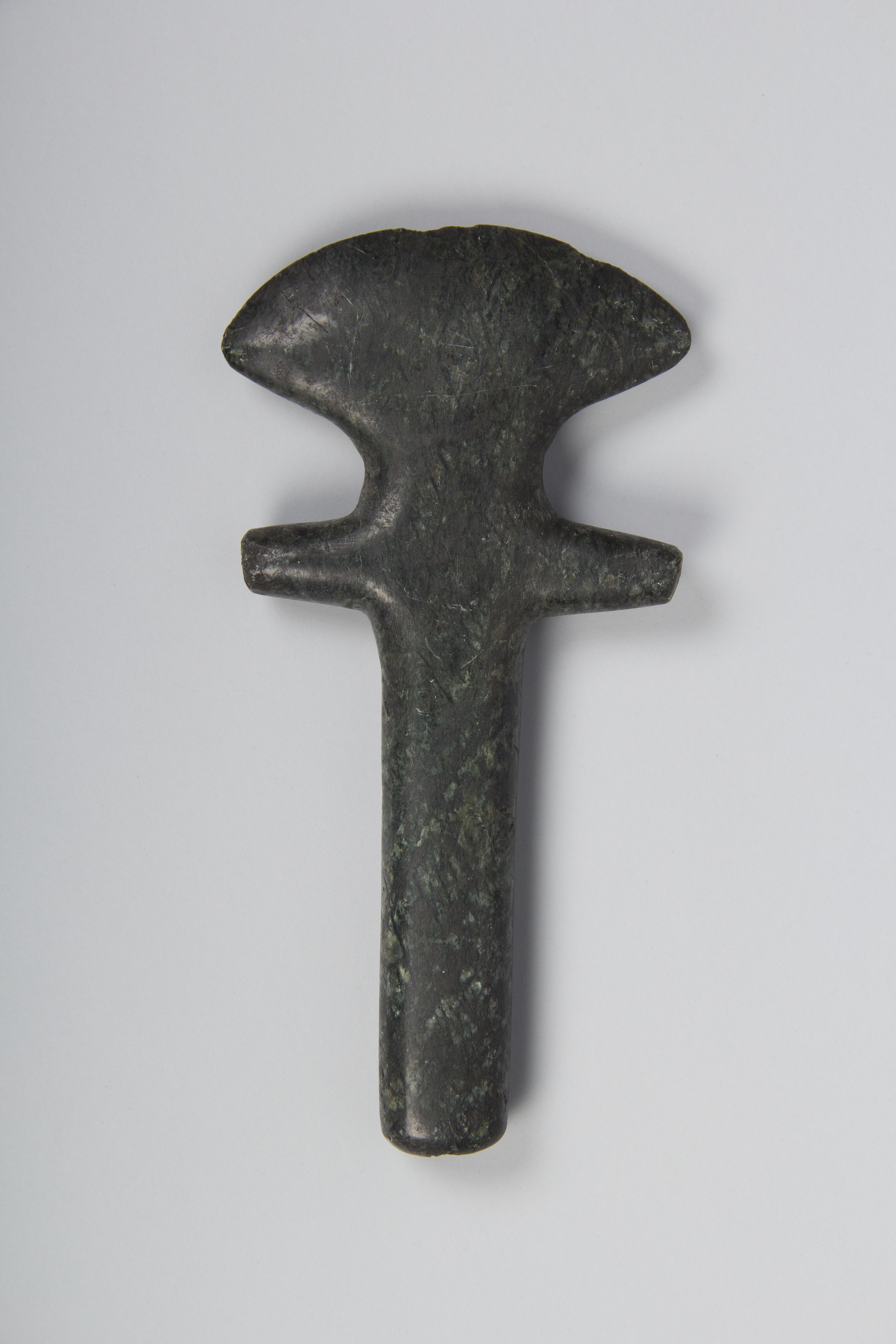Javascript must be enabled to continue!
Stone Axe with Hornlike Protrusions (Yūkaku sekifu)
View through The Met
Stone, Final Jōmon period (ca. 1000–300 B.C.), Japan
Title: Stone Axe with Hornlike Protrusions (Yūkaku sekifu)
Description:
Stone, Final Jōmon period (ca.
1000–300 B.
C.
), Japan.
Related Results
BRONZE AGE MINIATURE OBJECT
BRONZE AGE MINIATURE OBJECT
Miniature axe or axe-chisel of Bronze age to Roman date (2150 BC- 410 AD). The object is similar to solid flat axes with a tapering blade, resembling a miniature version of the ear...
Coin of Bar Kokhba, year 1
Coin of Bar Kokhba, year 1
Obv.: Palm branch within laurel wreath, around Hebrew inscription
Rev. lyre with six strings and hornlike protrusions to r. and l. of soundbox top, border of dots, around Hebrew i...
Scaraboid Stamp Seal: Galloping Quadruped
Scaraboid Stamp Seal: Galloping Quadruped
This scaraboid stamp seal features an image of an unidentifiable animal. Its body is crescent shaped, and this appears to include an upraised head and extended tail. All of its fou...
ROMAN MINIATURE OBJECT
ROMAN MINIATURE OBJECT
A complete Romano British copper alloy votive model axe. The model is two-diemsional and consists of a broadly rectangular axe head with expanded cutting edge and narrowing butt; t...
ROMAN MINIATURE OBJECT
ROMAN MINIATURE OBJECT
A miniature copper alloy axe head with a loop on one side. The object is solid and circular in section at the socket end, with a narrower, flared blade. The blade has a curved oute...
Drawings of flints, and small axe heads and flints in silver.
Drawings of flints, and small axe heads and flints in silver.
Page of drawings, flints, and small axe heads and flints mounted in silver....
UNKNOWN MINIATURE OBJECT
UNKNOWN MINIATURE OBJECT
A copper-alloy votive axe of unknown dateClass: Axe...




